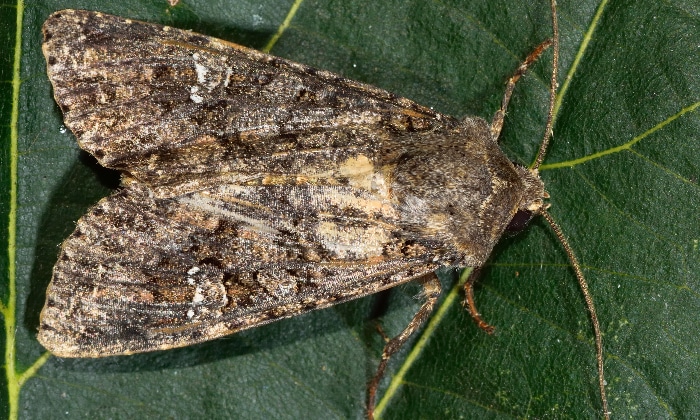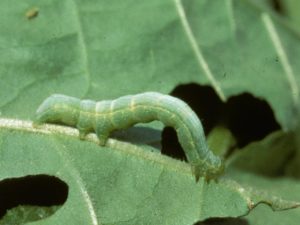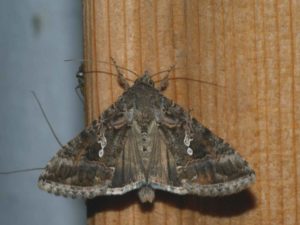Cabbage Looper Moth (Trichoplusia ni)
Cabbage Looper moth of the owlet moth family has a widespread distribution throughout North America, parts of Eurasia, Florida, and British Columbia. The larva is a minor pest of over 160 plants, including cabbage and broccoli. It even displays an unusual crawling behavior while moving, arching its back to form a loop, thus named ‘cabbage looper’.

Homestead-acres.com
Scientific Classification
- Family: Noctuidae
- Genus: Trichoplusia
- Scientific Name: Trichoplusia ni
Description and Identification
Caterpillar
They are green, with a white stripe. Early on, the larva appears hairy, but while maturing, it loses most of it, with just a few bristles remaining. Larvae are 3-4 cm, going through 4-7 instars in 9-14 days. Their locomotion involves crawling by moving by making a loop. Initially, they eat less, but as they grow, their consumption increases, and they end up feeding about thrice their weight.
Pupa
Once fully mature, they attach themselves to the underside of the leaves of the host plant and begin to pupate. Cocoons are silky. Male pupae are a little bigger than females. The pupation phase lasts between 4 and 13 days, depending on their surrounding’s temperature.
Adult Moth
Sexual Dimorphism: Present.
Males have light brown hairs on their abdomen, absent in females.
Color and Appearance:
It is around 2.5 cm in length.
Forewing: When the wings are open, they are mottled gray-brown with silver spots. When closed, the color and pattern remain unchanged.
Hindwing: When opened and closed, the wings are light brown near the base and dark brown close to the edges.
Average wingspan: 33 – 38 mm
Flight pattern: Erratic
Season: Year-round (preferring low temperatures)
Quick Facts
| Distribution | North America and Eurasia |
| Habitat | Urban areas, gardens, and woodlands |
| Lifespan of Adults | 10 – 12 days |
| Predators | Ants, lady beetles, and spiders |
| Host Plants | Broccoli, beet, cabbage, cantaloupe, celery, cauliflower, Chinese cabbage, collards, cucumber, kale, mustard, radish, rutabaga, turnip, lima bean, lettuce, parsnip, pea, pepper, potato, snap bean, spinach, squash, sweet potato, tomato, watercress, and watermelon |
| Adult Diet | Nectar from flowering plants like clover, dogbane, goldenrod, and sunflower |
Scientific Classification
- Family: Noctuidae
- Genus: Trichoplusia
- Scientific Name: Trichoplusia ni





